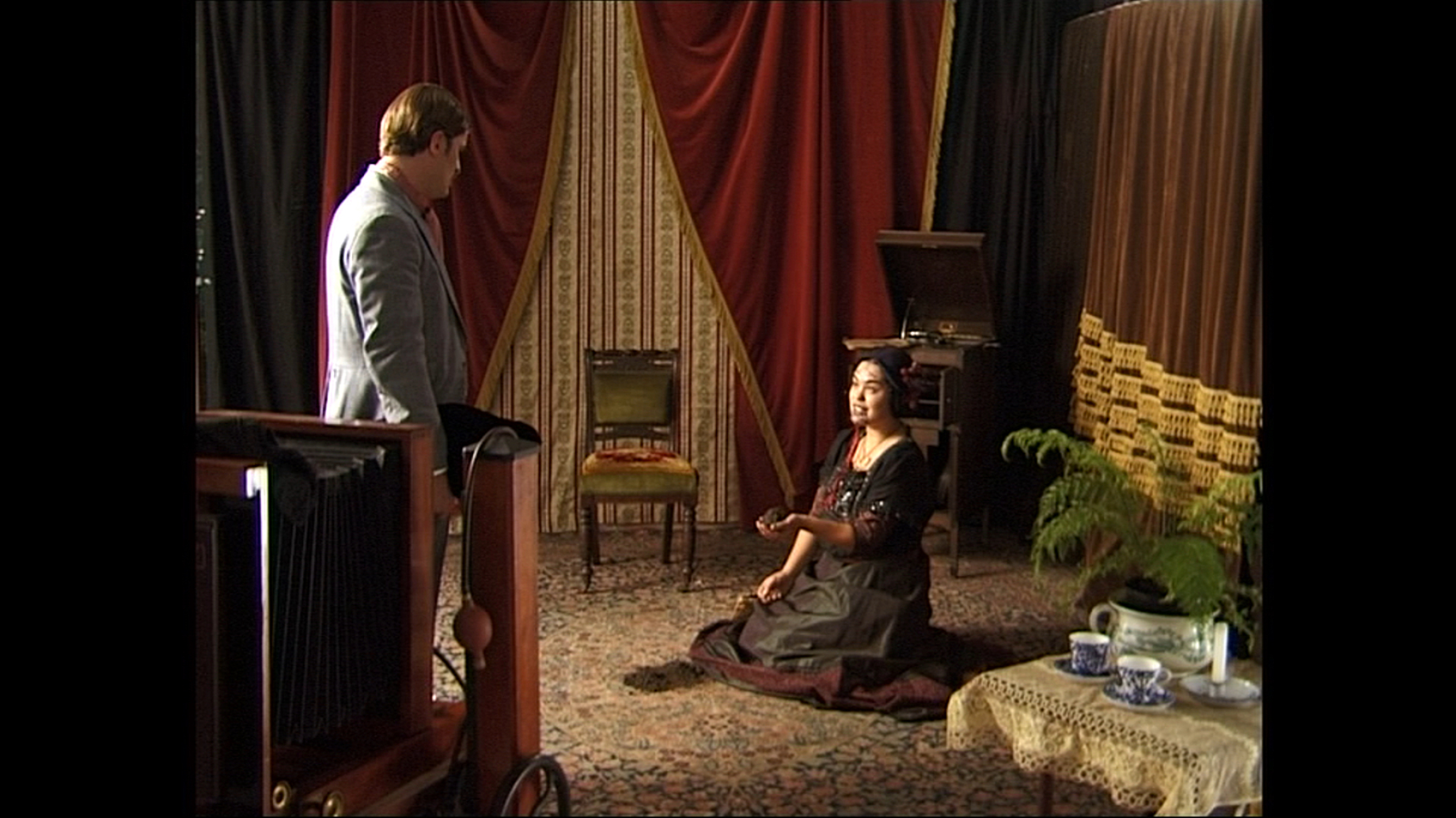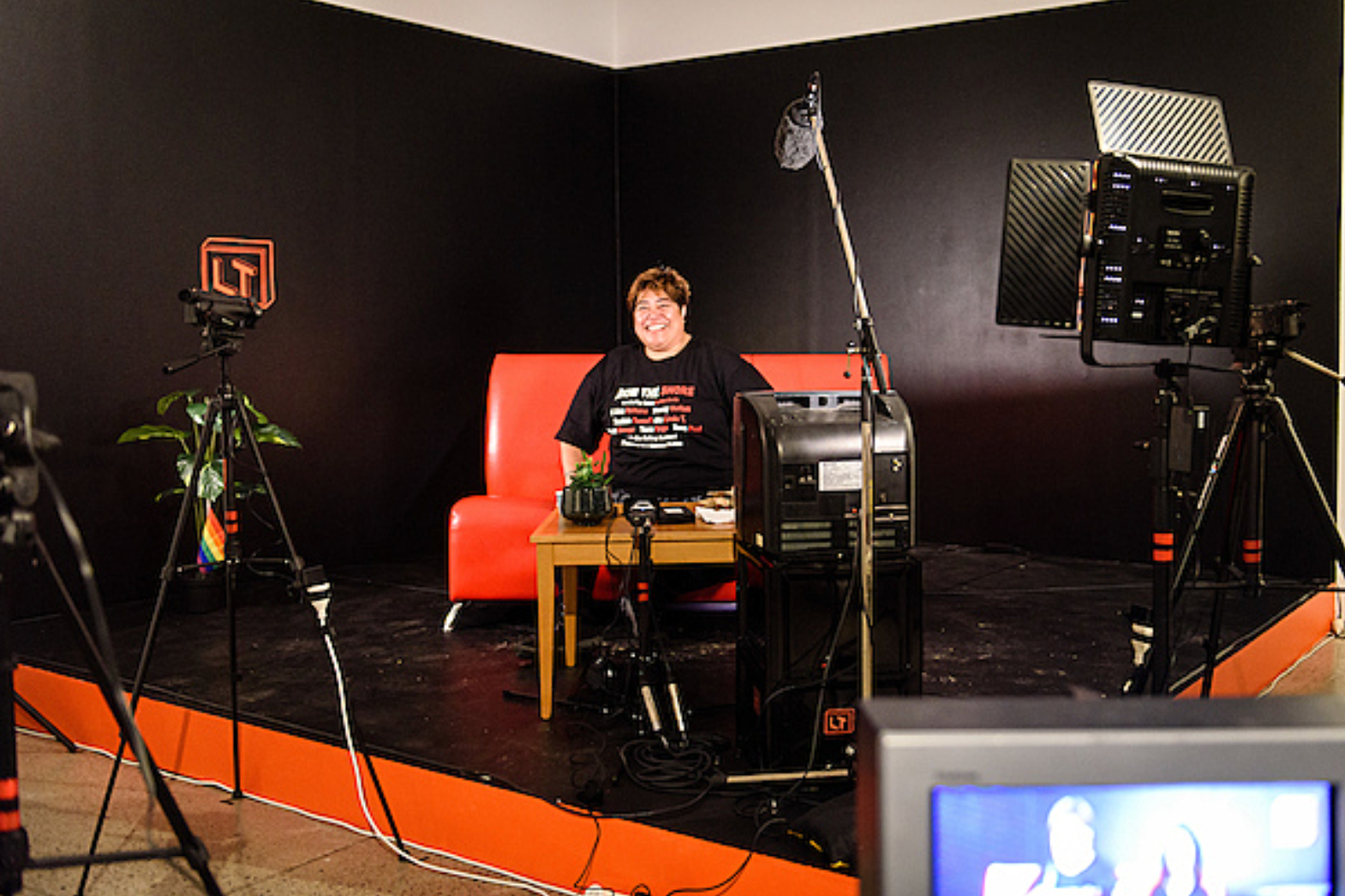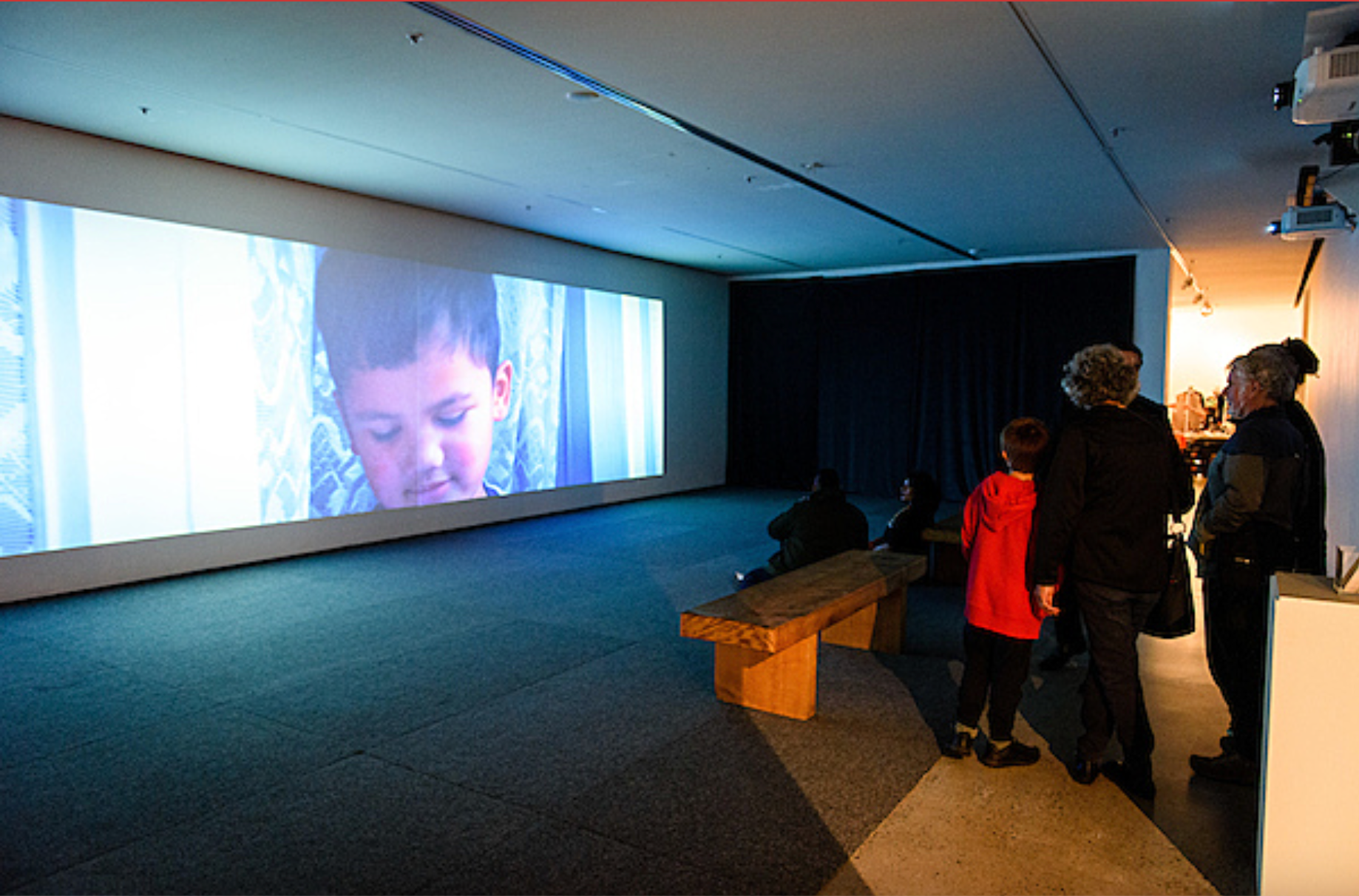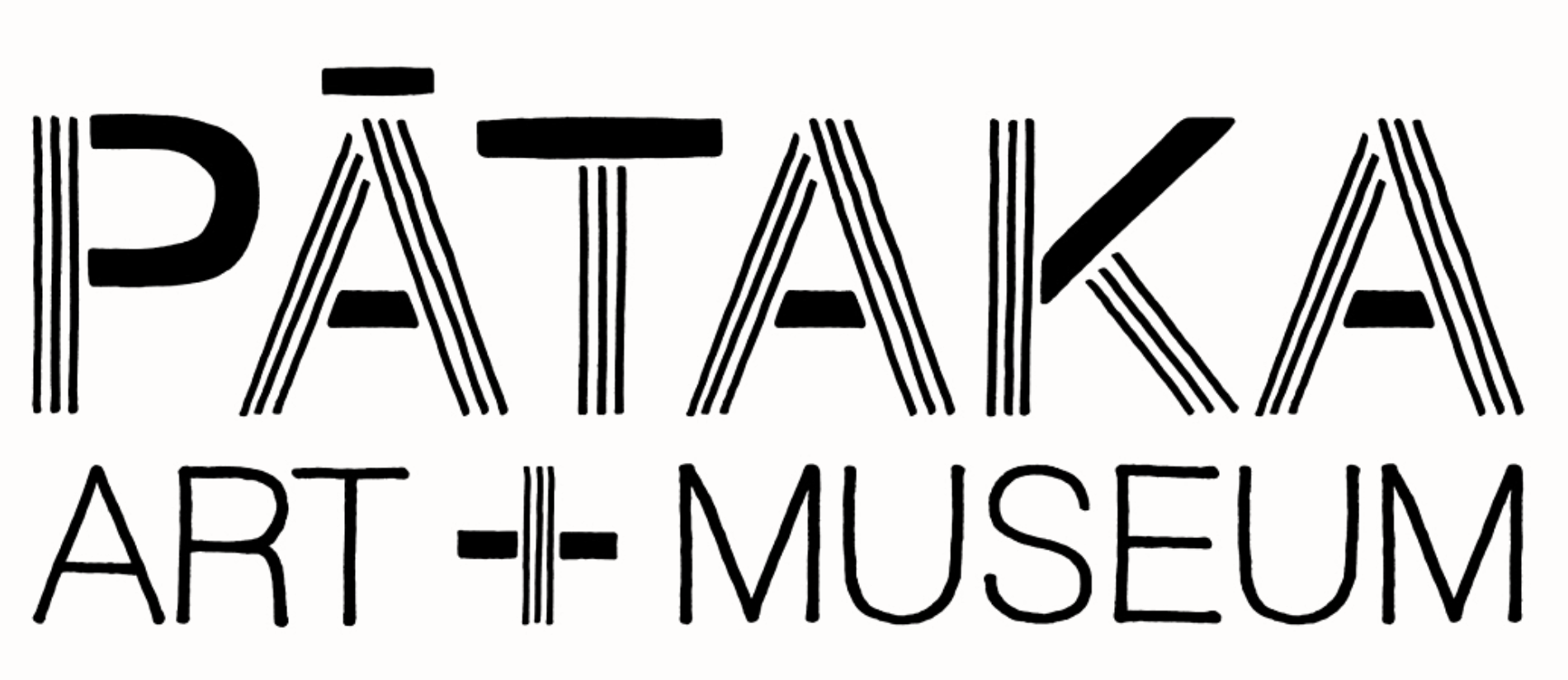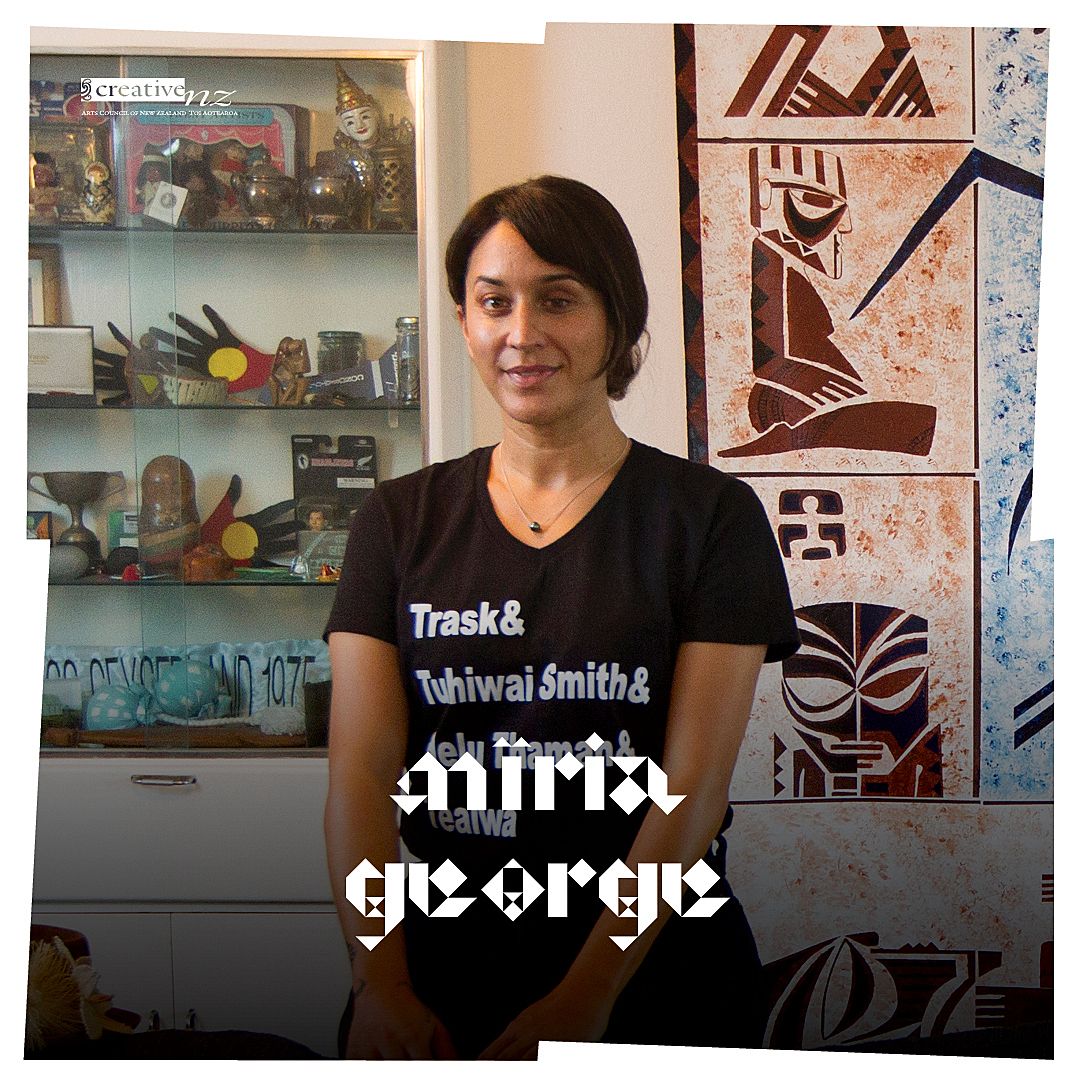Swells of Māori and Pasifika film: A Review of From the Shore
The legacy of Merata Mita and Barry Barclay on Indigenous artists is undeniable in the latest exhibition at Pātaka.
The legacy of Merata Mita and Barry Barclay on Indigenous artists is undeniable in the latest exhibition at Pātaka.
Captured within the walls of Pātaka Art + Museum is From the Shore, an exhibition curated by Ioana Gordon-Smith, which first opened at Te Uru Waitākere Contemporary Gallery. From the Shore features work by Lisa Reihana (Ngāpuhi, Ngāti Hine, Ngai Tu), Tracey Moffat (Australia), Nova Paul (Te Uri Ro Roi, Te Parawhau/Ngāpuhi), Tanu Gago (Sāmoa), Robert George (Te Arawa – Ngāti Kea, Ngāti Tuara, Ngāti Kuki ‘Āirani) and Tuafale Tanoa'i aka Linda T (Sāmoa). Most vitally, rangatira filmmakers Merata Mita (Ngāti Pikiao, Ngāi Te Rangi) and Barry Barclay (Ngāti Apa, Pākehā) are acknowledged as the source of this exhibition. The title itself is taken from Barclay’s subversion of the Imperialist gaze – placing the camera in the hands of iwi Māori, of the Indigenous, as the coloniser came to shore.
Both Mita and Barclay made a profound contribution not only to Māori filmmaking, and New Zealand filmmaking, but also to Indigenous filmmaking throughout the globe. Barclay directed the feature film Ngāti in 1987, from a screenplay by Tama Poata. Not only a writer, Poata was also an actor, a documentary filmmaker, a unionist and an activist fighting for human rights. Ngāti is the first feature film to be made by Māori. In 1988 Mauri, written and directed by Mita, was the first feature by he wāhine Māori. (It should also be noted that Ramai Te Miha Hayward co-directed To Love a Māori in 1972. Acknowledged as Aotearoa New Zealand’s first Māori filmmaker, Hayward’s career spanned over 50 years as a screenwriter, director, camerawoman and producer).
Upon the shoulders of these two giants, the exhibiting artists in From the Shore stand
Mita and Barclay’s vast contributions to filmmaking included the development, understanding and advocacy of Māori filmmaking philosophy and critical thinking. Mita sought to “indigenise the screen,” calling for diversity: “The plea for diversity is a plea for tolerance – in the case of those underprivileged through race, class, gender or age, it is a plea for justice.” Barclay anchored the term ‘Fourth Cinema,’ which carved space for Indigenous Cinema and evolved the Western film industry's framework of First, Second, Third Cinema. “First Cinema being American cinema; Second Cinema Art House cinema; and Third Cinema the cinema of the so-called Third World.” Upon the shoulders of these two giants, the exhibiting artists in From the Shore stand.
From the Shore is an exhibition told through the lenses of six artists. The images caught by these artists are potent. Their work can be woven back to philosophies of sovereignty and social change – two key pou demonstrated time and again in not only the work but also the advocacy of both Mita and Barclay.
From the Shore prioritises the acknowledgement of these two rangatira as the viewer enters the space. Two screens present interviews with Mita and Barclay – their presence is much like the whakaahua in the whare tupuna, and a constant reminder of the impetus of the exhibition.
The multiplicity of Horohoro (2018) pulls the viewer in. Named for the artist’s maunga, Horohoro is presented across five screens, mounted side by side, a disconnected landscape of sorts – connected and then redistributed. This is the pepeha of artist Robert George. As the five frames swiftly present various images – from lush green landscape, to the quiet of an internal aisle of the whare karakia, to the view looking out across the ātea of Kearoa Marae – the visual narrative is disrupted by bursts of colour that effectively layer the pepeha. These layers could be of whakapapa. These layers could also be those of time. George has subverted this oral tradition for a visual retelling that can still place his whakapapa with specificity.
The darkened, cinema-like space created for senior Māori artist Lisa Reihana presents Native Portraits n. 19897 (1998) commissioned by Te Papa Tongarewa in 1997. This work, one of the older pieces in this exhibition, acts as tuakana, acknowledging Māori moving-image whakapapa. Native Portraits n. 19897 is a series of scenes that present fictionalised moments of Māori sitting for studio photographs in the 19th century. It is also accompanied by five smaller live images that present the desired (or manicured) portraits. The scenes are provocative, uncomfortable and comical, as Reihana presents various negotiations between the sitters and the photographer. Reihana’s lens captures the literal power of the scenes’ photographer – as he manipulates (or manicures) the way in which Māori are represented within his frame.
Nova Paul’s Ko ahau te wai, ko te wai ko ahau (2018) is a large-scale work that dominates an interior white wall of the gallery. The artist’s framing is led by the Waipao puna itself – rejecting a Western construct of time and space. Investigating the impact of treaty claims upon her hapū, Paul, in wānanga with hapū historian Dinah Paul, has, in a single take, placed the river in the frame. Visually and aurally meditative, the puna is a constant in the gallery space. A two-part narrative, Ko ahau te wai, ko te wai ko ahau is accompanied by Ko te ripo (2018). Set at the foot of Whatitiri maunga, Ko te ripo documents the re-reading by Dinah Paul of evidence presented as part of treaty claims. Though a smaller frame, Ko te ripo acts as a reminder of vigilance and kaitiakitanga.
Senior Aboriginal artist Tracey Moffatt, like Reihana, is a tuakana; her two works included here are both montages. Lip (1999) and Other (2009) punch the viewer with bite-sized scenes that present pervasively negative representations of the Indigenous, of African Americans, of People of Colour. Wickedly hypnotic, the sheer volume of excerpts presented stand as an undeniable connection to the plea made by Mita for diversity. A plea that still stands across society today.
Around a corner, the gallery space has been reconfigured as a makeshift television studio, occupied by the living installation LTTV for the duration of this exhibition. The artist Tuafale Tanoa’i aka Linda T presents an ever-evolving work that creates space for voices of tangata whenua, Pasifika and others excluded from mono-cultural programming. LTTV has the ability to be immediate, to be urgent. And while LTTV guests are considered and invited, the interview that follows is not prepared, allowing for an organic and sprawling conversation to take place. This work is chaotic and impromptu – a departure from the previous pieces, yet a welcome change of direction.
Tanu Gago’s work dominates the white of another internal gallery wall. The cinemascope of APPARATUS (2018) is unavoidable and inescapable. Gago’s lens places Indigenous men literally at the centre of the frame. Multiple scenes are composed in various contexts – the urban, or amongst green ferns – men appear solo or layered next to each other. At times their identities utilise masks that heighten or obscure their identities, with bandanas or spiked goggles, the Indigenous men in the frame are unique and varied and are not like each other at all. APPARATUS pushes past any currently held notion of Indigenous masculinity.
From the Shore captures a current climate of Māori, Sāmoan and Indigenous Australian moving image, gathering new work that has been constructed, responded to, explored and crafted in the last year while also ensuring there is space to mark the art form’s evolution
From the Shore captures a current climate of Māori, Sāmoan and Indigenous Australian moving image, gathering new work that has been constructed, responded to, explored and crafted in the last year while also ensuring there is space to mark the art form’s evolution – through the earlier works of Lisa Reihana and Tracey Moffatt. Curator Ioana Gordon-Smith has created an exhibition that can push and pull at its viewer – the work will hang on to you long after you’ve left the walls of Pātaka.
This year seems to mark a moment of critical mass for Māori moving image. The Dowse Art Museum is currently presenting Māori Moving Image: An Open Archive, an exhibition co-curated by Bridget Reweti and Melanie Oliver. Featuring a revolving collection of what will be 20 artists and their works, An Open Archive makes space in a vastly different way, with works that request the viewer to physically engage – whether climbing into a surveillance vehicle that is the Suzuki Carry van belonging to Terri Te Tau (Rangitāne, Ngāti Kahungunu ki Wairarapa) titled Te Āhua o te Hau ki te Papaioea (2015), or sitting down to the small screen that, accompanied by headphones, presents an intimate showing of the animation Te Utu: The Battle of the Gods (1980) by rangatira Māori artist Robert Jahnke (Ngāi Taharora, Te Whānau a Iritekura, Te Whānau a Rakairoa o Ngāti Porou).
Surveying both From the Shore and An Open Archive, the abundance of Māori and Pasifika artists utilising this medium right now is striking. This intersection with moving image has clearly been building across decades, considering the milestones achieved by Mita, Barclay and Jahnke – working with moving image three to four decades ago would have been a different experience to what it is now. Today, we have an ease of technology – is this why so many artists gravitate to this form? (Technology has become increasingly accessible, many marae now supply the wifi network and password in the wharekai – often next to the sink and the tea towel.) Or is it because the act of capturing image, kaupapa and narrative in the frame can amplify the voice of an artist and therefore a hapū, an iwi, a village, an island, a country?
Across two evocative and thought-provoking exhibitions, the artists featured have a lot to say, and for very good reason – as there is no singular narrative to a Māori, Pasifika or Indigenous experience.
While short-form moving image dominates at both Pātaka and The Dowse, in Porirua and Lower Hutt respectively, longer-form narrative-based Māori and Pasifika moving image, or feature filmmaking, also continues to progress. Feature documentary Merata: How Mum Decolonised the Screen (2018) premiered at the New Zealand International Film Festival, and screened at both Sundance and the Berlin International Film Festival. The first feature film written, directed and produced by Pasifika women, Vai (2019), premiered at the Berlin International Film Festival. Over 30 years after Mita’s Mauri, what will be only the second feature film to be written and directed by wāhine Māori is reported to begin filming later this year. An adaptation of the Patricia Grace novel, Cousins will be directed by Ainsley Gardiner and Briar Grace-Smith.
Right now, both Pātaka and The Dowse pass the mic to Māori and Pasifika moving-image artists. One thought that has sat with me since I left Pātaka’s opening of From the Shore is where is City Gallery, Wellington in this korero? Who are they passing the mic to?
Pātaka holds From the Shore with ease, a true whanaunga to curator Gordon-Smith’s exhibition. For the potency of the artists' images to be further seen, From the Shore is deserving of a bigger gallery space again – where Aotearoa New Zealand can be provoked, humoured and engaged in deeper thought of iwi Māori and iti tangata Pasifika. Perhaps Pātaka could be resourced to build an extension, to expand the wharenui of the gallery itself – because the artists are here and they’re ready right now.
This piece is presented as part of a partnership with the Pātaka Art + Museum. They cover the costs of paying our writers while we retain all editorial control.

